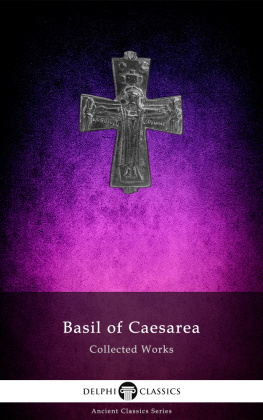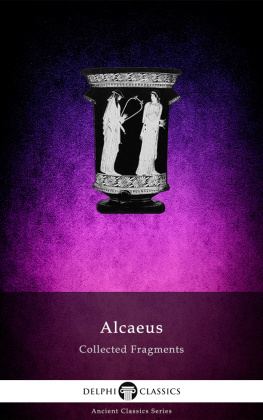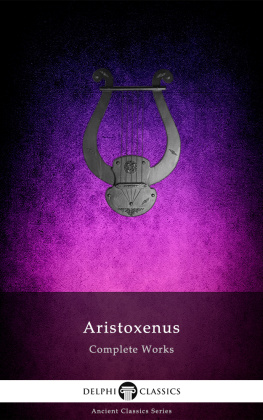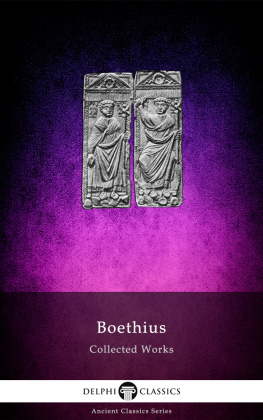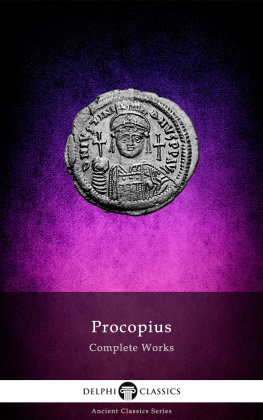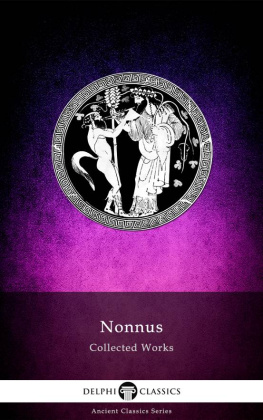The Collected Works of
BASIL
(AD 330-379)

Contents

Delphi Classics 2021
Version 1

Browse Ancient Classics







The Collected Works of
BASIL OF CAESAREA

By Delphi Classics, 2021
COPYRIGHT
Collected Works of Basil of Caesarea
First published in the United Kingdom in 2021 by Delphi Classics.
Delphi Classics, 2021.
All rights reserved. No part of this publication may be reproduced, stored in a retrieval system, or transmitted, in any form or by any means, without the prior permission in writing of the publisher, nor be otherwise circulated in any form other than that in which it is published.
ISBN: 978 1 80170 042 9
Delphi Classics
is an imprint of
Delphi Publishing Ltd
Hastings, East Sussex
United Kingdom
Contact: sales@delphiclassics.com

www.delphiclassics.com
The Translations

Kayseri, Turkey, formerly the ancient city of Caesarea Basils birthplace
Brief Introduction to Basil of Caesarea

From 1911 Encyclopdia Britannica, Volume 3
BASIL, known as Basil the Great ( c. 330379), bishop of Caesarea, a leading churchman in the 4th century, came of a famous family, which gave a number of distinguished supporters to the Church. His eldest sister, Macrina, was celebrated for her saintly life; his second brother was the famous Gregory of Nyssa; his youngest was Peter, bishop of Sebaste; and his eldest brother was the famous Christian jurist Naucratius. There was in the whole family a tendency to ecstatic emotion and enthusiastic piety, and it is worth noting that Cappadocia had already given to the Church men like Firmilian and Gregory Thaumaturgus. Basil was born about 330 at Caesarea in Cappadocia. While he was still a child, the family removed to Pontus; but he soon returned to Cappadocia to live with his mothers relations, and seems to have been brought up by his grandmother Macrina. Eager to learn, he went to Constantinople and spent four or five years there and at Athens, where he had Gregory of Nazianzus for a fellow-student. Both men were deeply influenced by Origen, and compiled the well-known anthology of his writings, known as Philocalia (edited by J. A. Robinson, Cambridge, 1893). It was at Athens that he seriously began to think of religion, and resolved to seek out the most famous hermit saints in Syria and Arabia, in order to learn from them how to attain to that enthusiastic piety in which he delighted, and how to keep his body under by maceration and other ascetic devices. After this we find him at the head of a convent near Arnesi in Pontus, in which his mother Emilia, now a widow, his sister Macrina and several other ladies, gave themselves to a pious life of prayer and charitable works. He was not ordained presbyter until 365, and his ordination was probably the result of the entreaties of his ecclesiastical superiors, who wished to use his talents against the Arians, who were numerous in that part of the country and were favoured by the Arian emperor, Valens, who then reigned in Constantinople. In 370 Eusebius, bishop of Caesarea, died, and Basil was chosen to succeed him. It was then that his great powers were called into action. Caesarea was an important diocese, and its bishop was, ex officio , exarch of the great diocese of Pontus. Hot-blooded and somewhat imperious, Basil was also generous and sympathetic. His zeal for orthodoxy did not blind him to what was good in an opponent; and for the sake of peace and charity he was content to waive the use of orthodox terminology when it could be surrendered without a sacrifice of truth. He died in 379.
The principal theological writings of Basil are his De Spiritu Sancto , a lucid and edifying appeal to Scripture and early Christian tradition, and his three books against Eunomius, the chief exponent of Anomoian Arianism. He was a famous preacher, and many of his homilies, including a series of lenten lectures on the Hexameron , and an exposition of the psalter, have been preserved. His ascetic tendencies are exhibited in the Moralia and Regulae , ethical manuals for use in the world and the cloister respectively. His three hundred letters reveal a rich and observant nature, which, despite the troubles of ill-health and ecclesiastical unrest, remained optimistic, tender and even playful. His principal efforts as a reformer were directed towards the improvement of the liturgy, and the reformation of the monastic orders of the East.

Saint Basil of Caesarea, fifteenth century micrography from Mount Athos
On the Holy Spirit

Translated by Blomfield Jackson, 1885
CONTENTS
Preface I.
THIS translation of a portion of the works of St. Basil was originally begun under the editorial supervision of Dr. Wace. It was first announced that the translation would comprise the De Spiritu Sancto and Select Letters , but it was ultimately arranged with Dr. Wace that a volume of the series should be devoted to St. Basil, containing, as well as the De Spiritu Sancto , the whole of the Letters , and the Hexmeron . The De Spiritu Sancto has already appeared in an English form, as have portions of the Letters , but I am not aware of an English translation of the Hexmeron , or of all the Letters . The De Spiritu Sancto was presumably selected for publication as being at once the most famous, as it is among the most valuable, of the extant works of this Father. The Letters comprise short theological treatises and contain passages of historical and varied biographical interest, as well as valuable specimens of spiritual and consolatory exhortation. The Hexmeron was added as being the most noted and popular of St. Basils compositions in older days, and as illustrating his exegetic method and skill, and his power as an extempore preacher.
Next page
